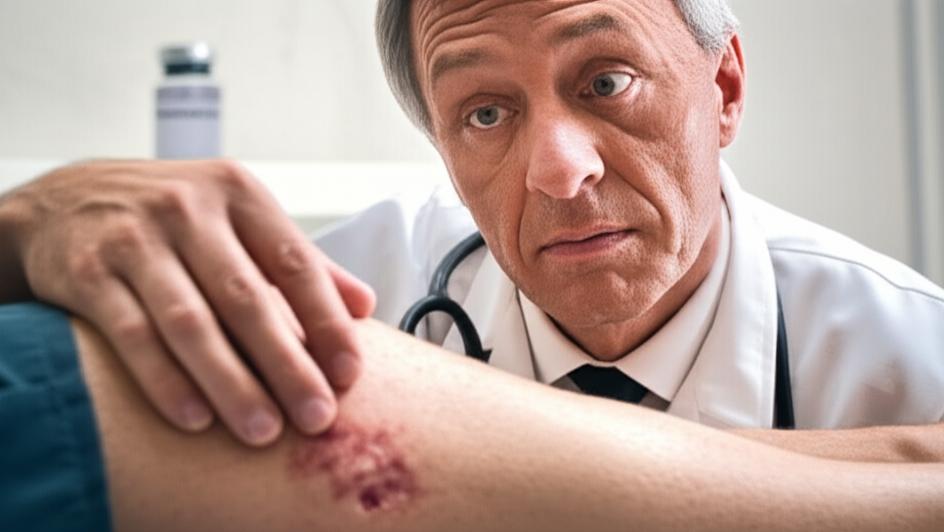I remember a patient coming in, just frustrated. He’d been battling a deep, painful skin abscess on his leg for weeks. A couple of rounds of standard antibiotics just weren’t touching it. He was feeling defeated, and frankly, I was concerned. The infection was stubborn and getting angry. That’s when we, as doctors, reach for a different class of tools. In his case, the answer was a powerful group of antibiotics known as Lincosamides.
It’s a name you’ve probably never heard unless you’ve needed one. And that’s okay. Think of them as specialists we call in for tougher fights.
What Exactly Are Lincosamides?
Simply put, Lincosamides are a class of antibiotics used to treat bacterial infections. Just like you have different types of cars for different jobs, we have different classes of antibiotics—like penicillins or tetracyclines—for different types of bacteria.
There are a few types, but only one is commonly used in people today:
- Clindamycin: This is the main one you’ll encounter. It’s a real workhorse for us.
- Lincomycin: This is an older version that we rarely use anymore.
- Pirlimycin: You won’t see this one; it’s used to treat infections in cattle.
One of the reasons we like clindamycin is its versatility. Depending on the infection, we can give it in several ways:
- Orally (as a capsule you swallow)
- Topically (as a cream or gel you apply to your skin, often for acne)
- Intravenously (IV, directly into a vein for serious infections)
- Intramuscularly (as a shot into a muscle)
- Intravaginally (as a cream or suppository)
What Infections Do Lincosamides Treat?
These antibiotics are particularly good against two main types of bacteria: gram-positive and anaerobic bacteria.
That sounds technical, I know. “Gram-positive” just refers to how bacteria look under a microscope after a specific staining test. It helps us identify the bug and its weaknesses. “Anaerobic” bacteria are the tough ones that can live and thrive without oxygen, often in deep wounds or abscesses.
We often prescribe Lincosamides for infections caused by:
- Staphylococcus bacteria (like a Staph infection or even the more resistant MRSA)
- Streptococcus bacteria (responsible for things like strep throat and skin infections)
Because of this, you might be prescribed a lincosamide for:
- A deep infection like a lung abscess
- Serious blood infections (septicemia)
- Infections in the female reproductive system, like pelvic inflammatory disease (PID)
- Wounds that penetrate deep into the abdomen
- Severe acne or rosacea that hasn’t responded to other treatments
- Infections of the skin, mouth, or respiratory tract
- Preventing heart infections (endocarditis) in certain patients before dental work
- Treating a specific type of pneumonia in people living with HIV
How Do These Antibiotics Work?
So, how do they do their job? It’s pretty clever, actually. Lincosamides work by getting inside the bacteria and blocking their ability to make proteins.
Bacteria, like all living things, need to make proteins to grow, repair themselves, and multiply. By stopping this protein-making factory, lincosamides either halt the bacteria’s growth (we call this a bacteriostatic effect) or, at higher doses, kill them outright (a bactericidal effect).
This makes them incredibly useful, especially for people who have an allergy to penicillin.
Potential Side Effects and What to Watch For
Every medication has potential side effects, and it’s my job to make sure you know what to look out for. Most are mild, but some are serious. It’s important to know the difference.
| Side Effect | What It Means & What to Do |
|---|---|
| Nausea, vomiting, abdominal pain | These are the most common. Try taking the medication with food. If it’s severe, let us know. |
| Mild diarrhea | Some gut upset can happen with any antibiotic. Stay hydrated. |
| Vaginal itching or discharge | Antibiotics can sometimes disrupt the normal balance of flora, leading to a yeast infection. Call us if this happens. |
| Call Your Doctor Immediately If You Experience: | |
| Severe or bloody diarrhea | This is the most important one to watch for. It could be a sign of a serious intestinal inflammation called C. diff colitis. Do not ignore this. |
| Skin rash, hives, or blisters | This could be an allergic reaction. In rare cases, a severe skin reaction (like Stevens-Johnson syndrome) can occur. |
| Trouble breathing or swallowing (dysphagia) | This can be a sign of a severe allergic reaction (anaphylaxis) and is a medical emergency. |
| Yellowing of the skin or eyes (jaundice) | This could indicate a problem with your liver. |
Important Considerations Before Taking Lincosamides
Before we prescribe any medication, we have a chat about your health history. It’s crucial you tell us if you:
- Are pregnant, planning to become pregnant, or are breastfeeding.
- Have a history of liver problems, kidney disease, or gastrointestinal issues like colitis.
- Are taking other antibiotics, specifically chloramphenicol or macrolides, as they can interact.
And please, always finish the entire course of antibiotics we prescribe, even if you start feeling better. Stopping early can allow the tougher bacteria to survive and cause a relapse.
Take-Home Message
- Lincosamides (like clindamycin) are powerful antibiotics we use for specific, often serious, bacterial infections that don’t respond to other treatments.
- They work by stopping bacteria from making the proteins they need to grow and multiply.
- They are a great alternative for people with penicillin allergies.
- The most common side effects are gut-related, like nausea and diarrhea.
- CRITICAL: If you develop severe or bloody diarrhea while taking this medication, call your doctor immediately.
- Always tell your doctor your full medical history and finish the entire prescribed course.
Being prescribed a strong antibiotic can feel a little daunting, but it just means we’re using the right tool for a tough job. We’ll always discuss the plan with you, and we’re here to answer any questions along the way. You’re not alone in this.


